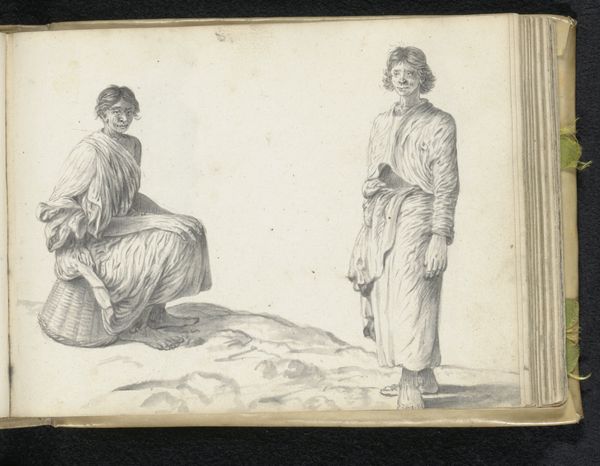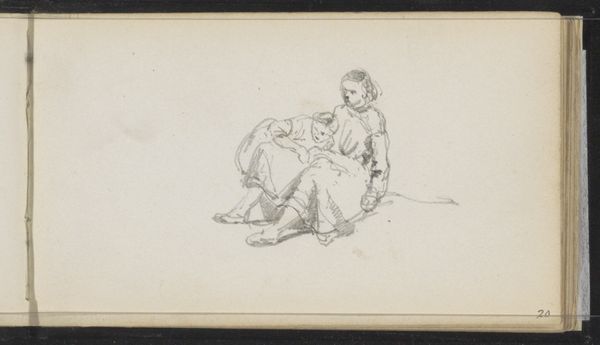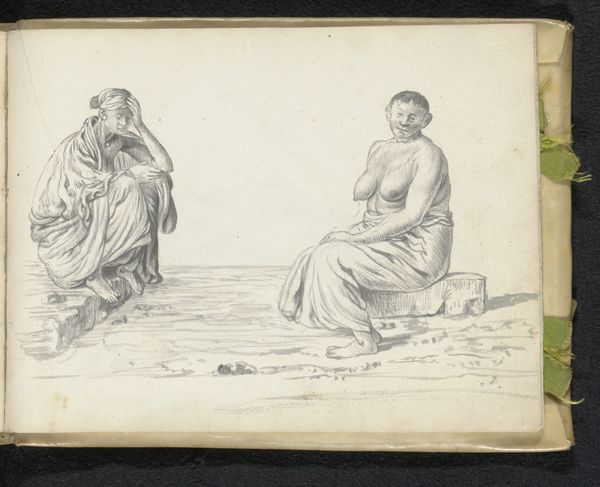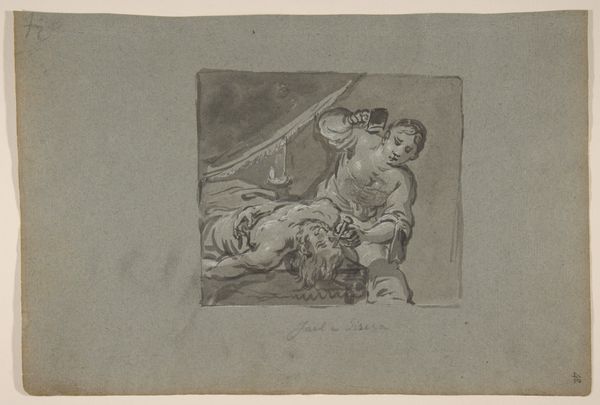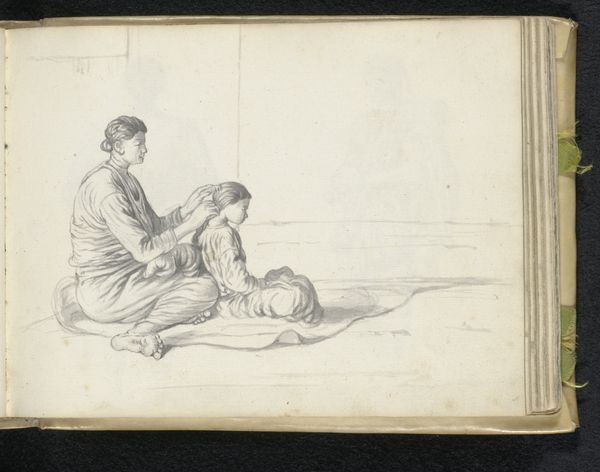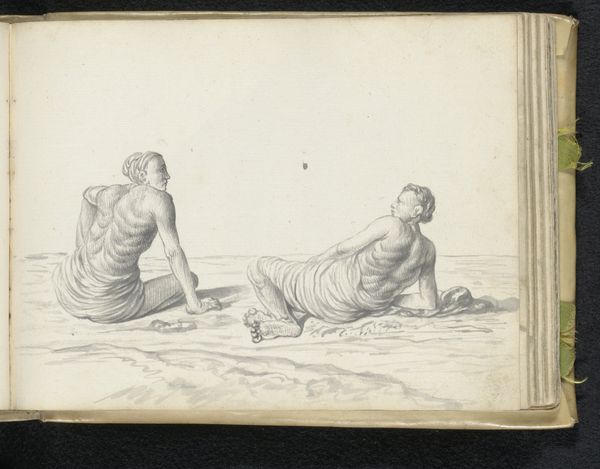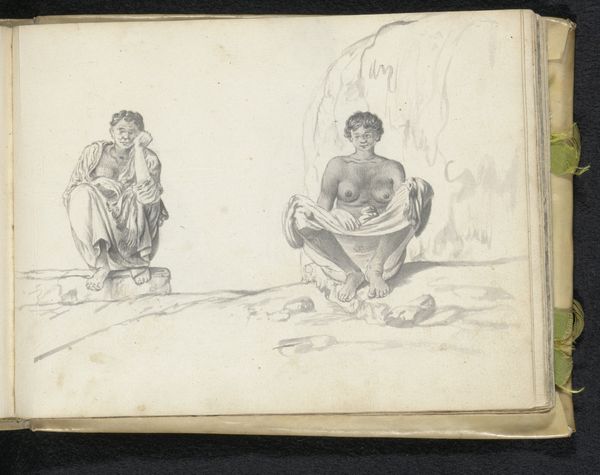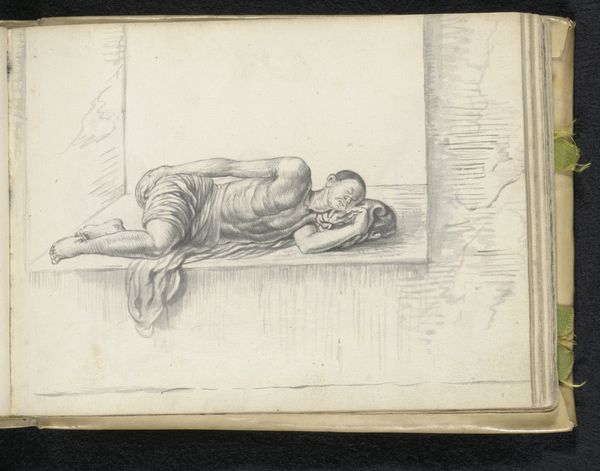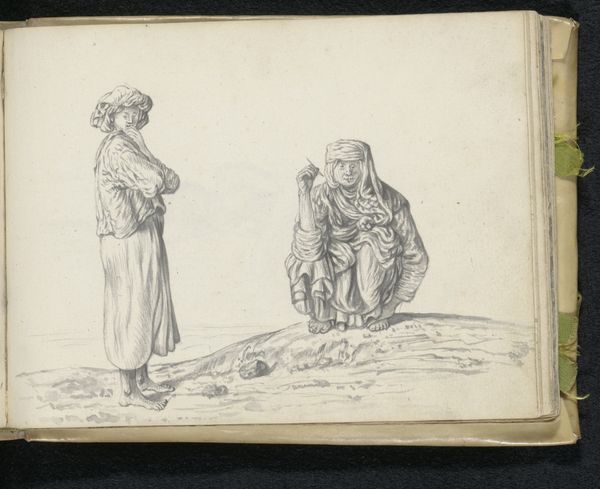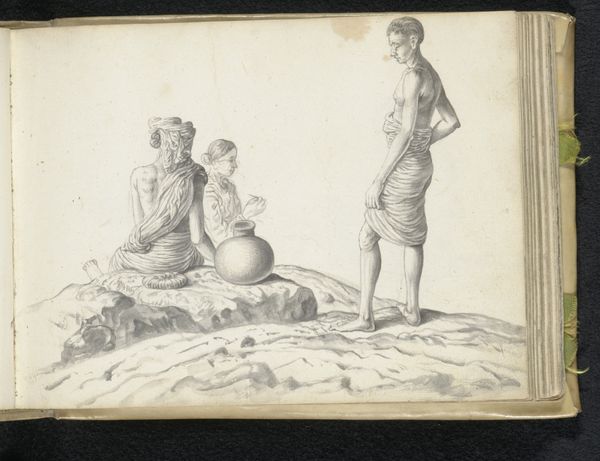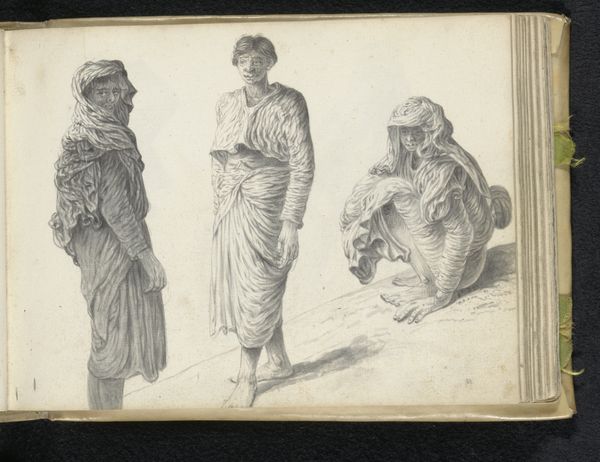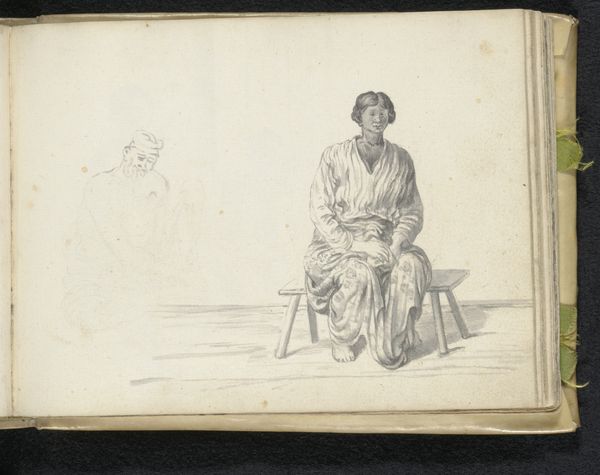
drawing, pencil
#
drawing
#
baroque
#
figuration
#
coloured pencil
#
pencil
#
sketchbook drawing
#
genre-painting
#
nude
Dimensions: height 148 mm, width 196 mm
Copyright: Rijks Museum: Open Domain
Curator: Here we have Esaias Boursse's "Two Labourers at Rest," a pencil drawing from 1662. Editor: My initial sense? Weariness. And also quiet—a silent understanding between these two figures. The pale, muted tones emphasize a shared moment of exhaustion. Curator: Exactly. Note the compositional simplicity—the stark ground supporting the figures and negative space enhances this feeling. One man sits, back turned, muscles defined. The other lies prone, seemingly lost in slumber. What do you see in the draftsmanship? Editor: The pencil work is quite delicate, isn’t it? Especially the rendering of the musculature in the seated figure. The artist uses subtle shading to create volume. The draping of the fabric is more gestural, almost cursory. Perhaps this signifies the relative importance assigned to labor versus leisure? Curator: Intriguing observation! Consider too, the historical context. This drawing emerges from the Dutch Golden Age. Genre scenes depicting everyday life were common. Boursse offers a glimpse into the world of the working class. It avoids idealization and classical motifs, portraying instead a rare quiet realism of the average person. Editor: There’s a vulnerability too, in how both figures are presented, stripped bare. And it evokes a melancholic tone despite the possible implication of freedom. I wonder, what type of labor were these men engaged in? Curator: That remains somewhat ambiguous. But there's an undeniable sense of human connection here, away from work, just a moment for themselves, for simply being. I find it poignant. Editor: Poignant, indeed. Boursse uses subtle means to portray complex narratives—poverty and privilege; connection and separation—of his time. It is that very contrast that compels me.
Comments
No comments
Be the first to comment and join the conversation on the ultimate creative platform.

